Abstract
Although the nature of firefighting involves particular health hazards, previous mortality and morbidity studies of firemen have produced inconsistent evidence for an increased risk of mortality from cardiovascular disease, respiratory disease, cancer and accidents. Mortality experience since 1915 has been examined in 5655 Boston firefighters, comprising all male members of the city fire department with three or more years of service. The observed cause of death as stated on the death certificates of 2470 deceased firefighters has been compared with the numbers expected based on rates for the male population of Massachusetts and of the United States of America. Among all firefighters, deaths from all causes were 91% of expected. The standardised mortality ratio (SMR) was markedly reduced (less than 50) for infectious disease, diabetes, rheumatic heart disease, chronic nephritis, blood diseases and suicide. The SMR was 86 for cardiovascular deaths, 83 for neoplastic deaths, and 93 for respiratory deaths. The SMR for accidents was 135 for active firefighters. The results suggest that the survival experience of firefighters is strongly influenced by strict entry selection procedures, ethnic derivation, and sociocultural attributes of membership. While excessive morbidity has been demonstrated in firefighters, there does not appear to be a strong association between occupation and cause-specific mortality.
Full text
PDF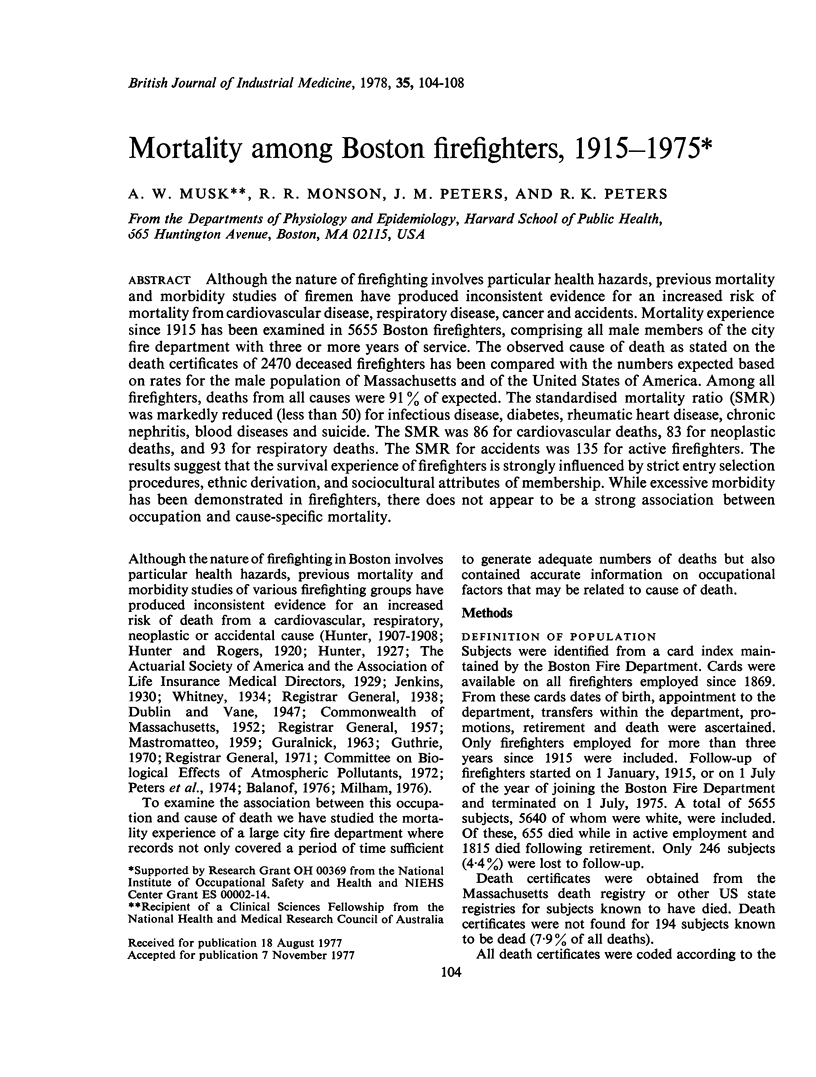
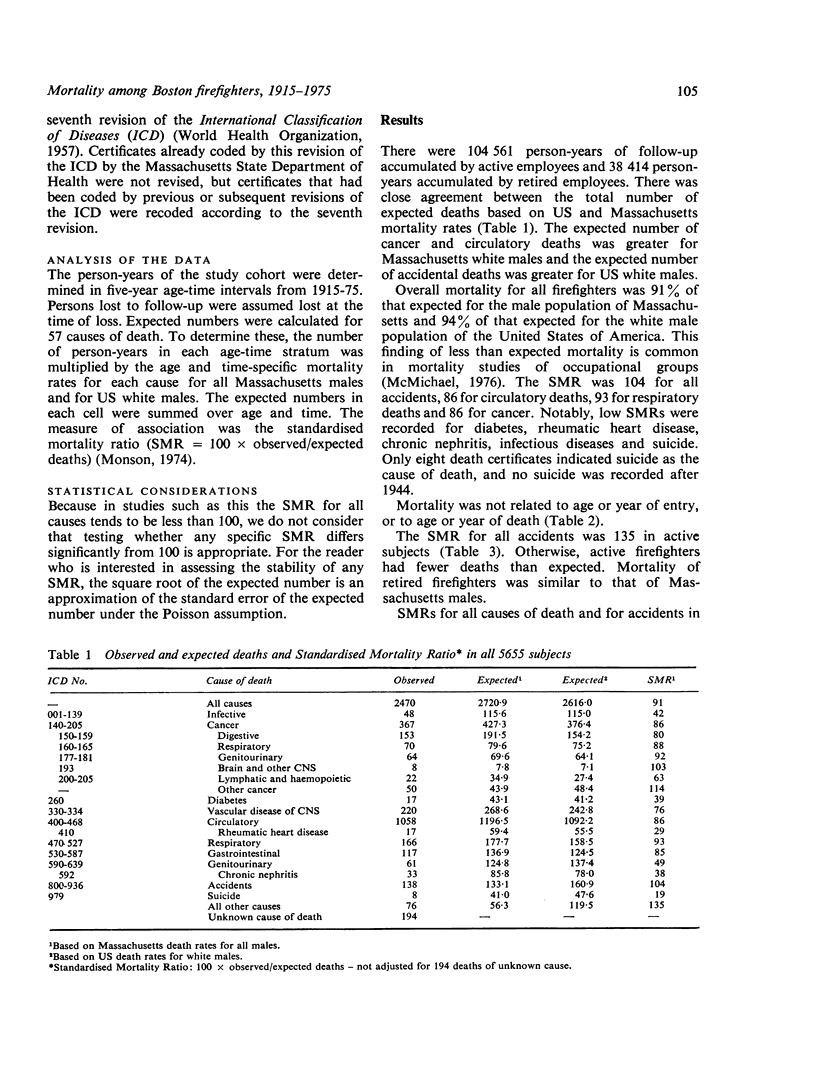
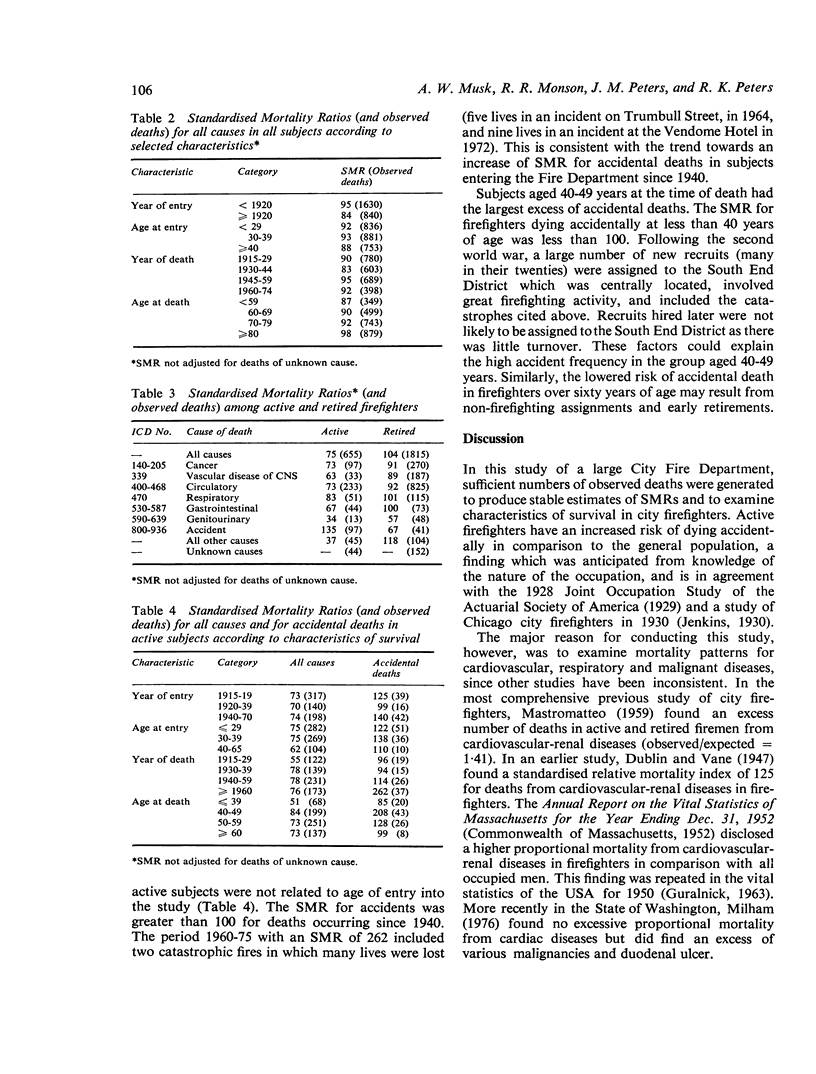
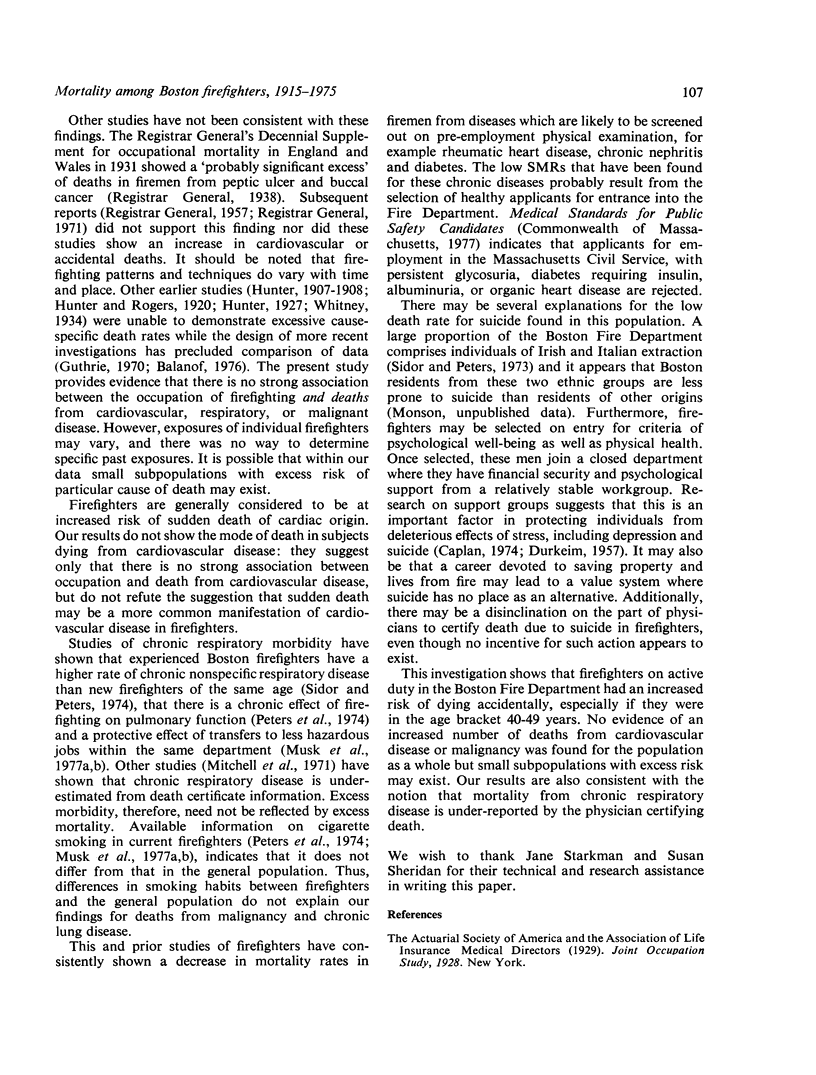
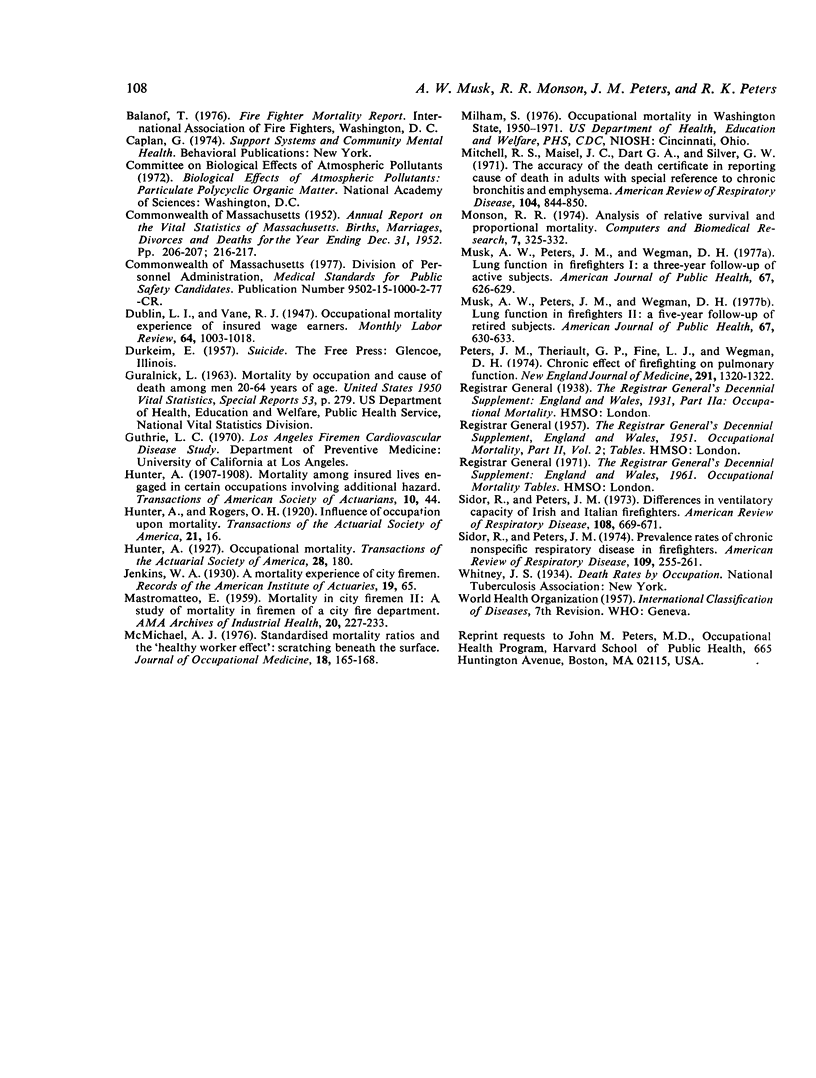
Selected References
These references are in PubMed. This may not be the complete list of references from this article.
- MASTROMATTEO E. Mortality in city firemen. II. A study of mortality in firemen of a city fire department. AMA Arch Ind Health. 1959 Sep;20:227–233. [PubMed] [Google Scholar]
- McMichael A. J. Standardized mortality ratios and the "healthy worker effect": Scratching beneath the surface. J Occup Med. 1976 Mar;18(3):165–168. doi: 10.1097/00043764-197603000-00009. [DOI] [PubMed] [Google Scholar]
- Monson R. R. Analysis of relative survival and proportional mortality. Comput Biomed Res. 1974 Aug;7(4):325–332. doi: 10.1016/0010-4809(74)90010-x. [DOI] [PubMed] [Google Scholar]
- Musk A. W., Peters J. M., Wegman D. H. Lung function in fire fighters, I: a three year follow-up of active subjects. Am J Public Health. 1977 Jul;67(7):626–629. doi: 10.2105/ajph.67.7.626. [DOI] [PMC free article] [PubMed] [Google Scholar]
- Musk A. W., Petters J. M., Wegman D. H. Lung function in fire fighters, II: a five year follow-up fo retirees. Am J Public Health. 1977 Jul;67(7):630–633. doi: 10.2105/ajph.67.7.630. [DOI] [PMC free article] [PubMed] [Google Scholar]
- Peters J. M., Theriault G. P., Fine L. J., Wegman D. H. Chronic effect of fire fighting on pulmonary function. N Engl J Med. 1974 Dec 19;291(25):1320–1322. doi: 10.1056/NEJM197412192912502. [DOI] [PubMed] [Google Scholar]
- Sidor R., Peters J. M. Differences in ventilatory capacity of Irish and Italian fire fighters. Am Rev Respir Dis. 1973 Sep;108(3):669–671. doi: 10.1164/arrd.1973.108.3.669. [DOI] [PubMed] [Google Scholar]
- Sidor R., Peters J. M. Prevalence rates of chronic non-specific respiratory disease in fire fighters. Am Rev Respir Dis. 1974 Feb;109(2):255–261. doi: 10.1164/arrd.1974.109.2.255. [DOI] [PubMed] [Google Scholar]


